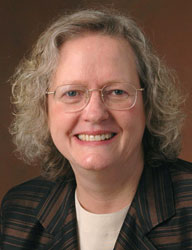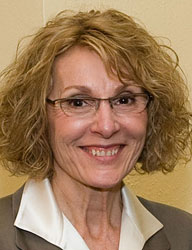Deans’ Message
The energy challenges Americans face demand that we look for clean, cost-effective sources. Through the Department of Energy’s SunShot Initiative, universities are joining forces to research and develop concentrated solar power (CSP) technology. Purdue, working with the Georgia Institute of Technology and University of Wisconsin, is developing a manufacturing method to produce a critical component of the power tower system: the heat exchanger. The heat exchanger must be capable of handling high-temperature fluids under high pressure at 800 degrees Celsius, or nearly 1,500 degrees Fahrenheit. Kenneth Sandhage, the Reilly Professor of Materials Engineering, is leading the team through a $4.8 million three-year grant.
For two decades, Engineering Projects in Community Service, or EPICS, has created partnerships between Purdue Engineering student teams and communities ranging from local agencies, such as the United Way, to remote South American villages. As part of Indiana’s Bicentennial celebration this year, EPICS teams have developed a cool flame torch that can be used in a relay by schools in all 92 counties throughout the state. Each county has developed a plan for transporting the torch — from farm combines, Amish horses and buggies and mounted to a speeding Indy race car. The advanced baton torch includes a multitude of modern day features like GPS, Wi-Fi, and cameras. And it’s eco-friendly as well.
Last November, the College named three preeminent teams to focus on research ranging from medical imaging and head trauma to advanced composite materials. With their selection, the total number of preeminent teams stands at 11. This competition is a key component of the College’s Strategic Growth Plan that is part of Purdue Moves, a range of initiatives designed to broaden Purdue’s global impact and enhance opportunities for our students.
And finally, Zhongming Liu, assistant professor of biomedical engineering and electrical and computer engineering, is integrating imaging techniques for mapping neural circuitry and activity in our brains that can help us understand and treat mental illness and neurological disorders. One of his most ambitious projects is a “brain decoding” effort that employs fMRI to observe neural activity in the brain and then use those observations to virtually reconstruct what people see.
We are pleased to share these and more stories with you. To learn more about the research being done in the College of Engineering, please follow me on Twitter: @LeahHJamieson

The John A. Edwardson Dean of Engineering
Ransburg Distinguished Professor of Electrical and Computer Engineering

Associate Dean of Engineering for Research
Professor of Agronomy, Civil, and Electrical and Computer Engineering
Chair of Excellence in Earth Observation
Discovery: Innovation@Purdue Engineering, is a Purdue College of Engineering publication that focuses on advances in research. The quarterly e-publication features recent research achievements in the College and highlights faculty and student research, including collaborations with international partners. Significant initiatives in engagement with industry and in translating research to practice will also be spotlighted.